We explain what the Taj Mahal is, where it is located and the history of its construction. Also, what are its characteristics and legends.
What is the Taj Mahal Mausoleum?
The Taj Mahal is a funerary monument in the city of Agra, India . Its name in Hindi which means "crown of palaces". It was erected between 1631 and 1654 during the rule of Emperor Shah Jahan of the Mughal dynasty.
This huge palace is considered one of the most beautiful examples of architecture in the region , a confluence of aesthetics and different cultures . In its entirety, the set of walled buildings occupy an area of 17 hectares and includes a gigantic mosque.
The Taj Mahal is one of the wonders of the world. In addition, it is a major tourist destination of India , receiving annually the visit of between 7 and 8 million visitors.
Who built it?
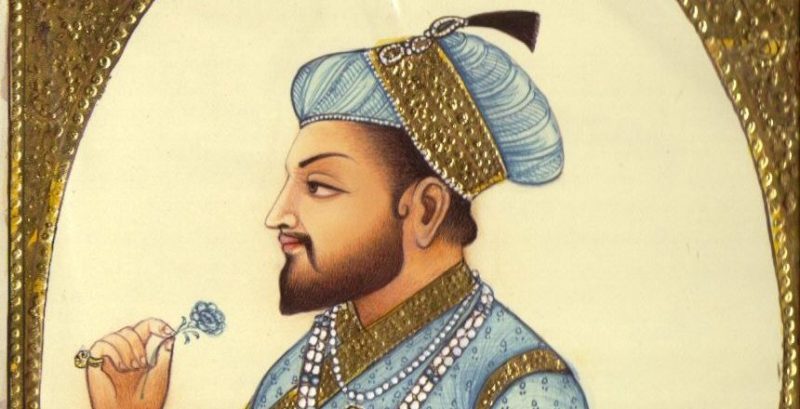
This wonder of the world was commissioned to the court architect Ustad Ahmad Lahori .
The Muslim emperor Shah Jahan (1592-1666) had it built to pay homage to his fourth wife and favorite, Arjumand Banu Begum, better known as Mamtaz Mahal, who died giving birth to the monarch's fourteenth daughter.
History of the Taj Mahal Mausoleum
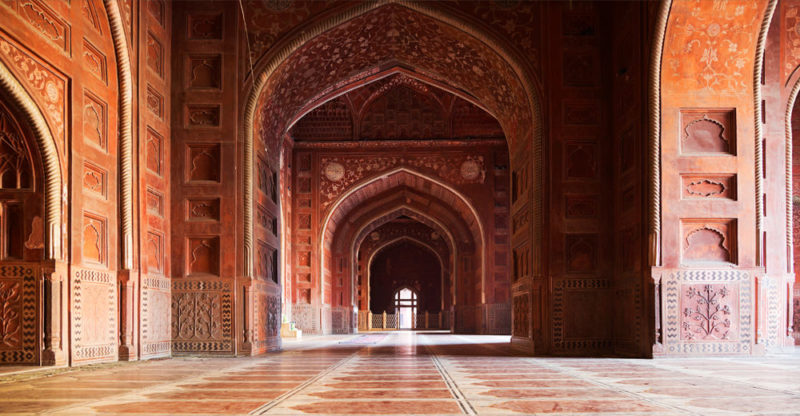
Shah Jahan ordered the construction of the Taj Mahal in 1632, as an offering to his wife, who had just passed away . Even before this work, the emperor was an important patron for various art forms .
He devoted enormous resources to the beautification of India, especially its capital, located in the city of Agra (later moved to Delhi). For example, in honor of Mamtaz Mahal he also ordered the design and construction of the Shalimar gardens in Lahore.
The work was only finished in 1656 . The emperor was already very ill and his two sons, Sha Shuja and Aurangzeb (Abu Muzaffar Muhiuddin Muhammad Aurangzeb Alamgir) were rising to claim their own empires.
Deposed from his rule, the former monarch was allowed to live under house arrest for the remaining 10 years of his life, which, it is said, he spent looking out the window at the mausoleum of his beloved wife. When he died, he was buried with her inside the Taj Mahal .
At the end of the 19th century, when India was dominated by the British Empire , the Taj Mahal was in very poor condition and various sections of the building threatened to collapse. Many of the precious jewels on its walls and many of its structures had been stolen or damaged during the sepoy rebellion in 1857.
Its restoration began in 1908 , by order of the British Viceroy Lord Curzon. He also ordered the construction of the great lamp in the inner chamber, modeled after a mosque in Cairo, and the remodeling of its gardens following the English design.
Thanks to protective measures taken during the 20th century , the Taj Mahal survived World War II and the Pakistani-Indian wars of 1965 and 1971.
Taj Mahal Mausoleum Location
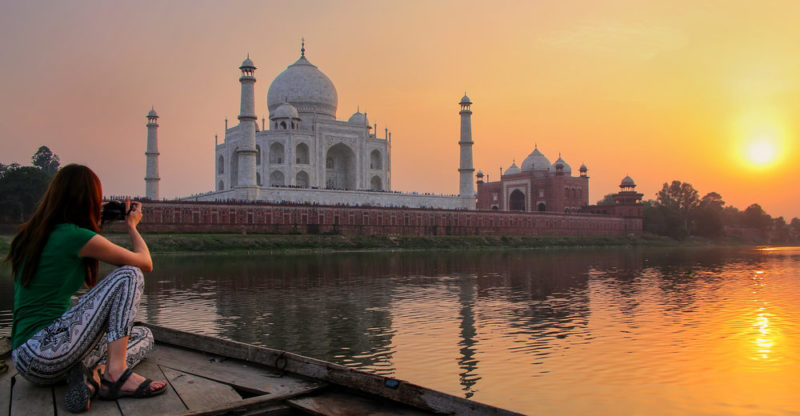
The Taj Mahal is located in the city of Agra, in the Indian province of Uttar Pradesh in the north of the country, and on the banks of the Yamuna River, one of the longest and largest tributaries of the famous Ganges River . This city is one of the most populated in the state and the country, and was the capital of the Mughal Empire between 1556 and 1658.
Taj Mahal Mausoleum Architecture
The design of the Taj Mahal did not correspond to a single person, but involved construction architects of diverse origins. Among them are:
- Ustad Isa and Isa Muhammad Effendi, disciples of the great Ottoman architect Koca Mimar Sinan Agha.
- Puru de Benarus, Persian.
- Ismail Khan, Ottoman, designer of the dome.
- Qazim Khan of Lahore, cast the pinnacle of solid gold on the main dome of the mausoleum.
- Chiranjilal, a craftsman from New Delhi, was responsible for the mosaics.
- Amanat Khan, a Persian from Shiráz, dealt with calligraphy.
- Muhammad Hanif, of the masonry.
- Mir Abdul Karim and Mukkarimat Khan, Iranians from Shiráz, took care of the financing and day-to-day management of the work.
Structure of the Taj Mahal Mausoleum
 A plan of the Taj Mahal shows its various parts in perfect symmetry, incorporating the river itself into the majestically decorated areas of the monument. We can then talk about:
A plan of the Taj Mahal shows its various parts in perfect symmetry, incorporating the river itself into the majestically decorated areas of the monument. We can then talk about:
- The Moonlight Garden, on the opposite side of the Yamuna River.
- The four minarets or towers of the mosque, located on the banks of the river, next to the mausoleum.
- The mausoleum of Mamtaz Mahal, in the middle of the minarets.
- The Muslim mosque flanking the mausoleum, with the habaz on the other side.
- The interior gardens or Charbagh , designed to represent the garden of Eden.
- The access fort or Darwaza at the end of the inner garden.
- The external courtyards on the other side of the access fort.
- The main access esplanade in the middle of the external courtyards.
- The secondary tombs on the outer side of the fort.
- The bazaar or Taj Ganji, outside the main access door.
Construction of the Taj Mahal Mausoleum
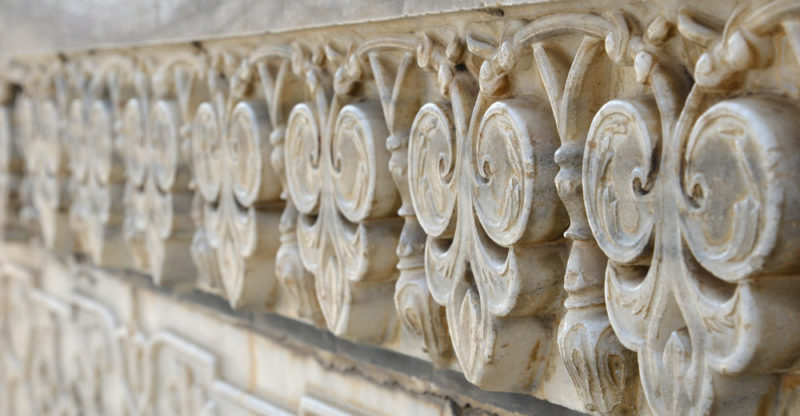 The construction of the Taj Mahal involved the efforts of some 20,000 workers , and consisted of continuous work during several stages. First, the excavation of the foundations required the filling of 12,000 m2 with rubble to reduce the seepage of the river and the uplift of the surface to about fifteen meters above the level of the bank.
The construction of the Taj Mahal involved the efforts of some 20,000 workers , and consisted of continuous work during several stages. First, the excavation of the foundations required the filling of 12,000 m2 with rubble to reduce the seepage of the river and the uplift of the surface to about fifteen meters above the level of the bank.The traditional bamboo scaffolding of the time was replaced by brick, outside and inside the walls of the mausoleum. Building and disassembling them took a significant portion of the total construction time. The marble was carried along a 15km long ramp , in carts pulled by thirty or forty oxen.
The mausoleum was built starting with the pedestal or base , then the building with its dome, then the four minarets, then the mosque and the jawab, and finally the access fort. Just building the first two parts took twelve years of work, and the rest of the complex ten more years.
The black Taj
The legend that the initial draft of the monument included the building of a second mausoleum on the opposite bank of the river, identical proportions but made marble black, called the black Taj. However, the monarch was dethroned by his sons before completing it, leaving only the bases on the other side of the river.This version has been denied, and it has been shown that the alleged bases of the black Taj are actually part of the Garden of Moonlight , equipped with an octagonal pool in which the image of the dome could be reflected, thus preserving the symmetry that inspired the project. Black marble has not been found anywhere nearby.
Other legends about the Taj Mahal Mausoleum
 Many things are told about the Taj Mahal, most of them simple legends or rumors. Some examples are:
Many things are told about the Taj Mahal, most of them simple legends or rumors. Some examples are:
- That the monarch ordered to cut off the hands of the workers who made the monument to prevent any other of similar beauty from ever being made.
- That the original monument included a set of gold leaves that covered the main dome, a golden railing that surrounded the cenotaphs, and other supposed elements stolen or lost over the centuries.
- That Lord Willam Bentinck, British Governor of India in 1830, planned the demolition of the Taj Mahal to sell the marble from which it is made.
- That the monument is actually a Hindu temple to the goddess Shiva, which was usurped and remodeled by the Islamic monarch.
Threats of the Taj Mahal Mausoleum
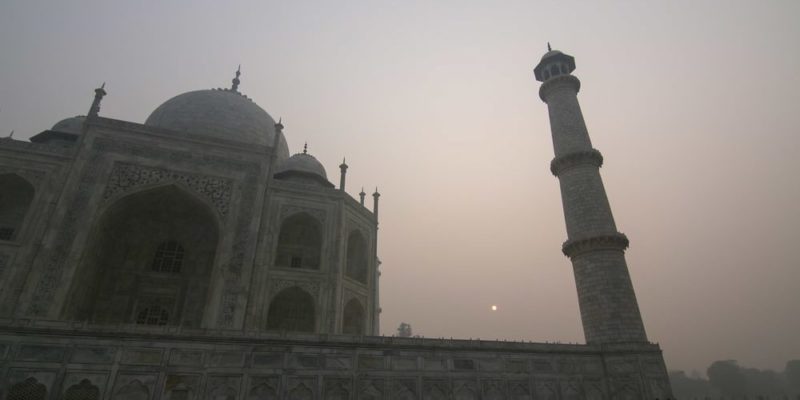 As curious as it may sound, the great contemporary threats to this architectural marvel come not from wars or large-scale catastrophes, but from the slow action of human industry .
As curious as it may sound, the great contemporary threats to this architectural marvel come not from wars or large-scale catastrophes, but from the slow action of human industry .The pollution in the region by, among others, the Mathura refinery, have brought one acid rain which seriously impairs the facilities of the Taj Mahal. It causes cracks and darkening of the marble, which in turn has affected the foundations of the building and its marvelous dome.
In addition, certain political and bureaucratic disputes regarding the ownership (Hindi or Muslim) of the building, make it more difficult to undertake the preservation and repair work that would be necessary to restore it to its former splendor.
Importance of the Taj Mahal Mausoleum
The Bengali poet Rabindranath Tagore described the Taj Mahal as "a tear on the cheek of time," due to its unique architecture and the narrative that accompanies its construction. It was declared a World Heritage Site by UNESCO in 1983 . In addition, in 2007 it was elected as one of the New Seven Wonders of the Modern World.The above content published at Collaborative Research Group is for informational and educational purposes only and has been developed by referring reliable sources and recommendations from technology experts. We do not have any contact with official entities nor do we intend to replace the information that they emit.
MA student of the TransAtlantic Masters program at UNC-Chapel Hill. Political Science with a focus on European Studies. Expressed ideas are open to revision. He not only covers Technical articles but also has skills in the fields of SEO, graphics, web development and coding. .
Leave a reply
Your email address will not be published. Required fields are marked *Recent post

Sport: What Is It, Types, Risks, Features, Characteristics and Examples

Dogs: Emergence, Features, Characteristics, Feeding and Breeds

Story: Definition, Elements, Structure, Features and Characteristics

